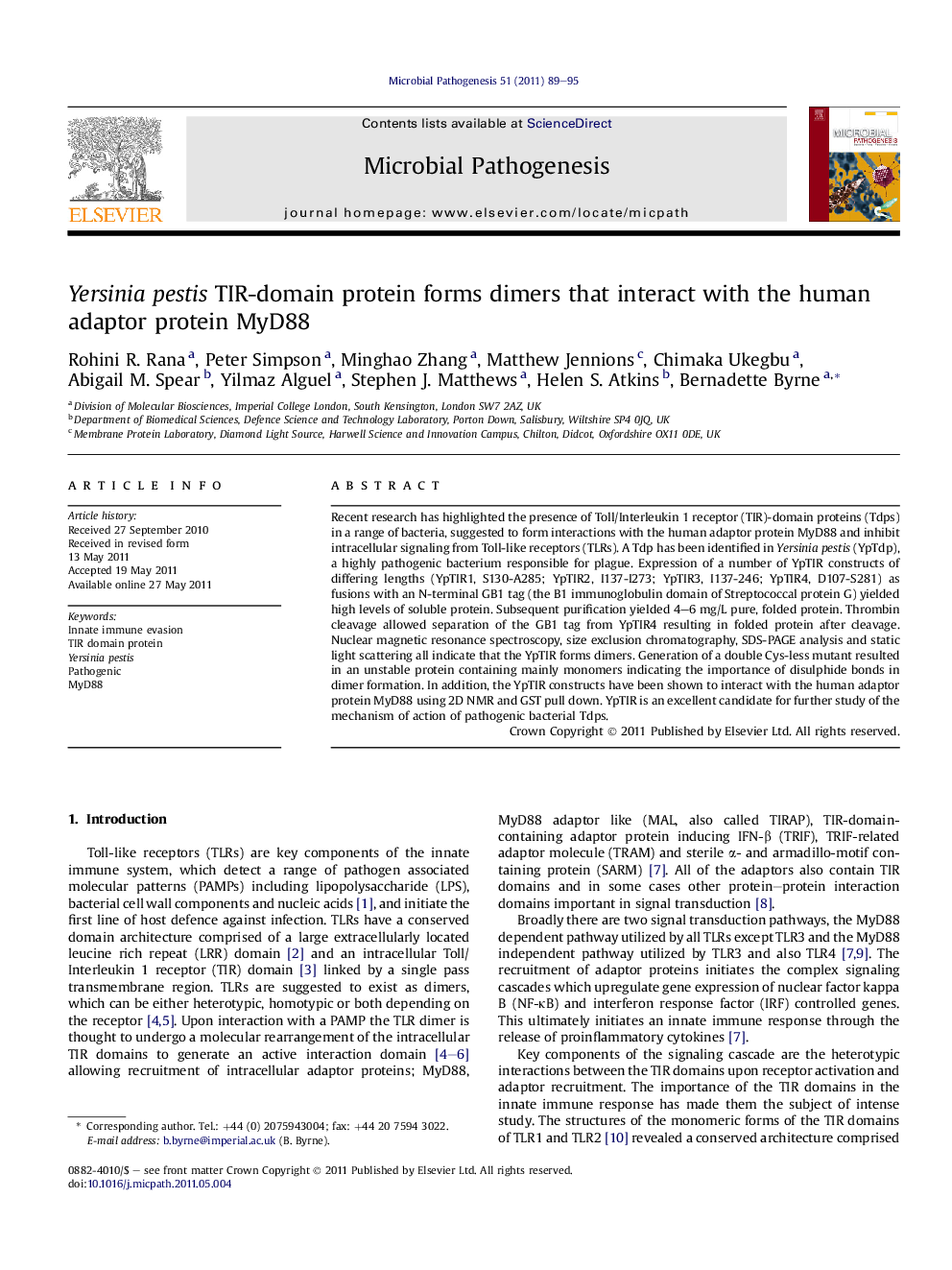| کد مقاله | کد نشریه | سال انتشار | مقاله انگلیسی | نسخه تمام متن |
|---|---|---|---|---|
| 3416781 | 1225149 | 2011 | 7 صفحه PDF | دانلود رایگان |

Recent research has highlighted the presence of Toll/Interleukin 1 receptor (TIR)-domain proteins (Tdps) in a range of bacteria, suggested to form interactions with the human adaptor protein MyD88 and inhibit intracellular signaling from Toll-like receptors (TLRs). A Tdp has been identified in Yersinia pestis (YpTdp), a highly pathogenic bacterium responsible for plague. Expression of a number of YpTIR constructs of differing lengths (YpTIR1, S130-A285; YpTIR2, I137-I273; YpTIR3, I137-246; YpTIR4, D107-S281) as fusions with an N-terminal GB1 tag (the B1 immunoglobulin domain of Streptococcal protein G) yielded high levels of soluble protein. Subsequent purification yielded 4–6 mg/L pure, folded protein. Thrombin cleavage allowed separation of the GB1 tag from YpTIR4 resulting in folded protein after cleavage. Nuclear magnetic resonance spectroscopy, size exclusion chromatography, SDS-PAGE analysis and static light scattering all indicate that the YpTIR forms dimers. Generation of a double Cys-less mutant resulted in an unstable protein containing mainly monomers indicating the importance of disulphide bonds in dimer formation. In addition, the YpTIR constructs have been shown to interact with the human adaptor protein MyD88 using 2D NMR and GST pull down. YpTIR is an excellent candidate for further study of the mechanism of action of pathogenic bacterial Tdps.
Journal: Microbial Pathogenesis - Volume 51, Issue 3, September 2011, Pages 89–95